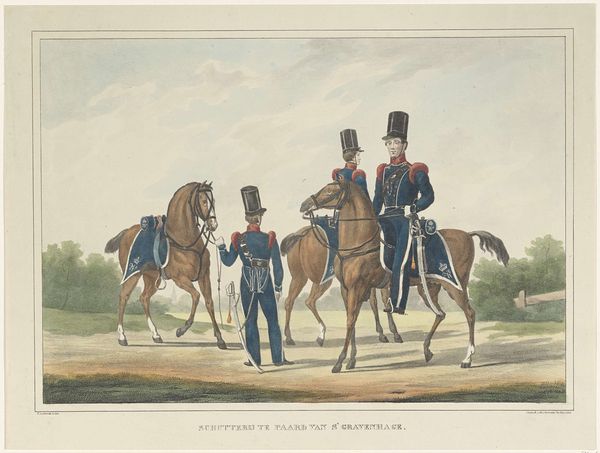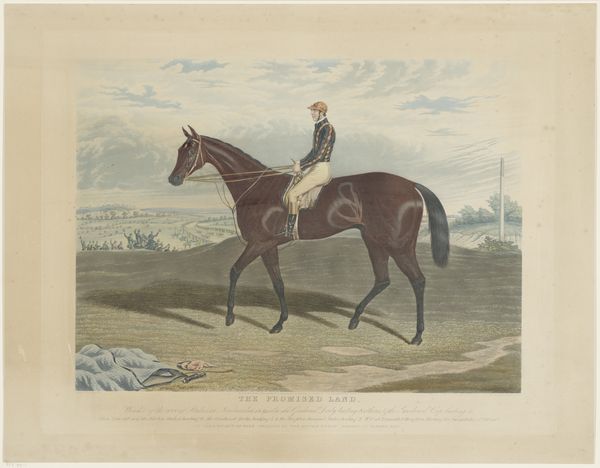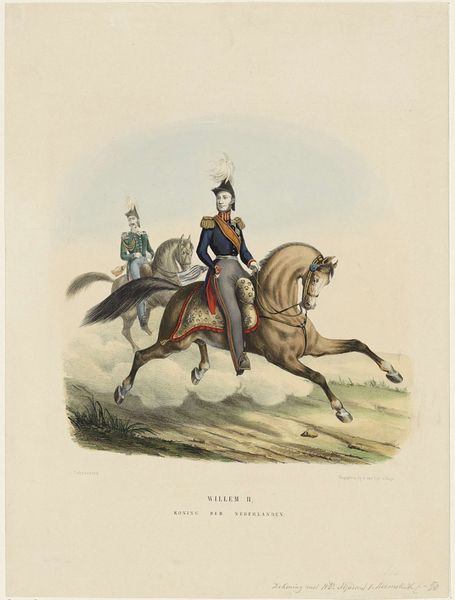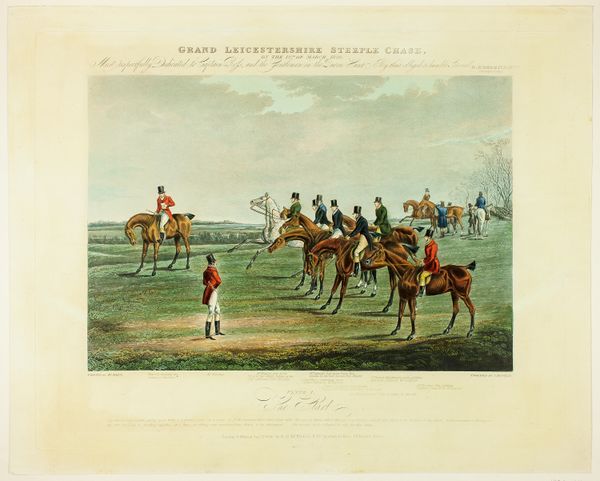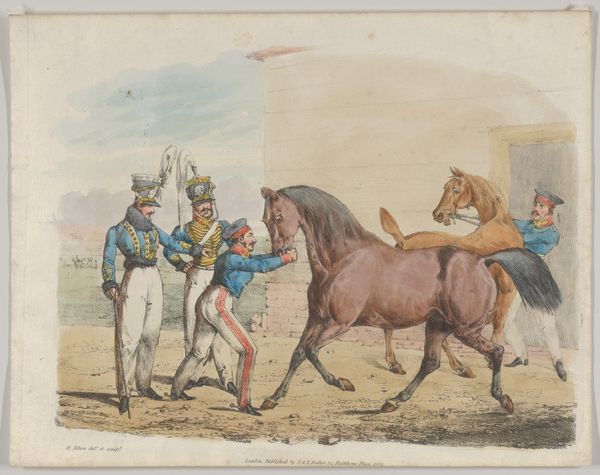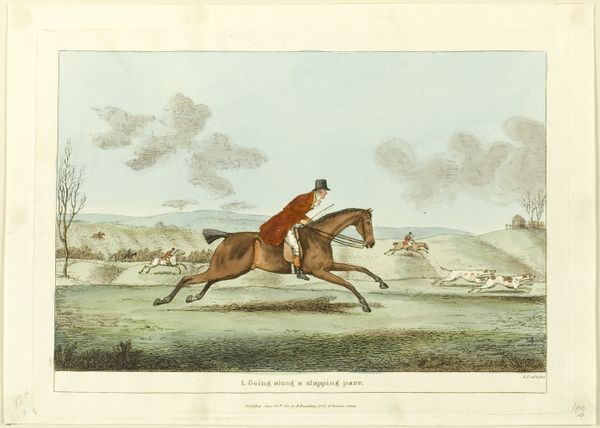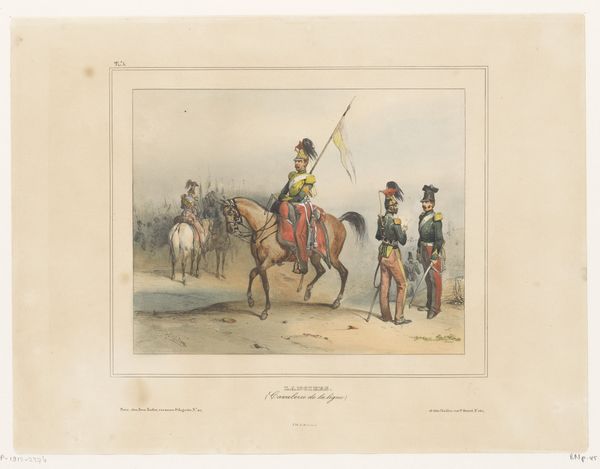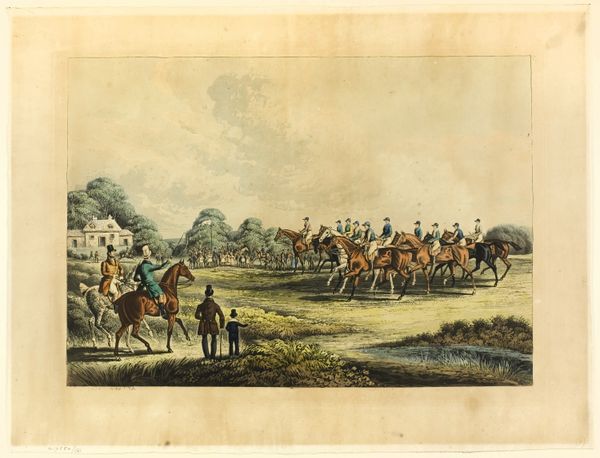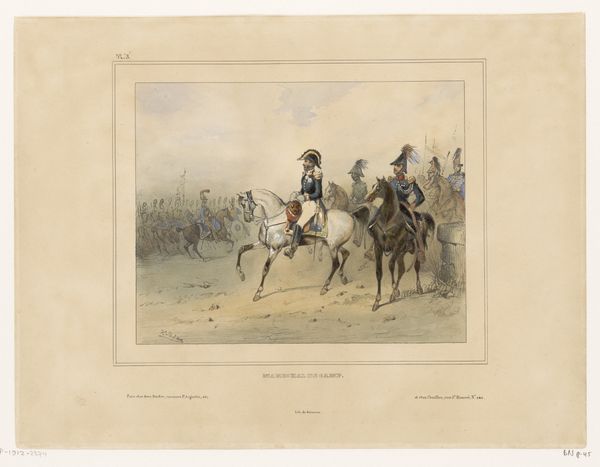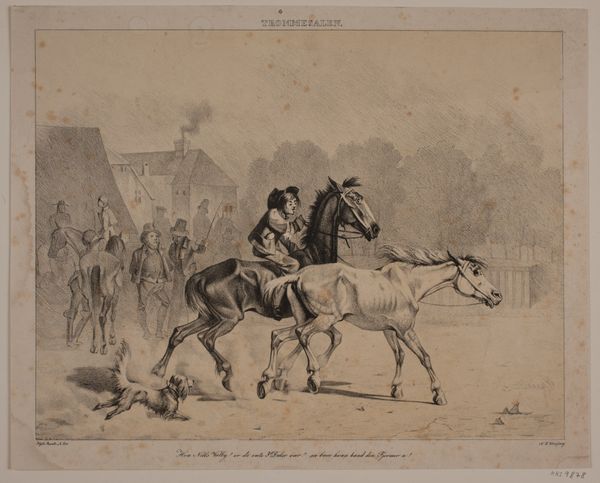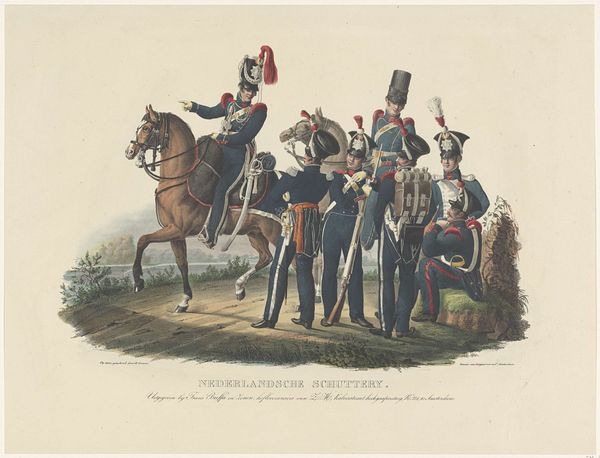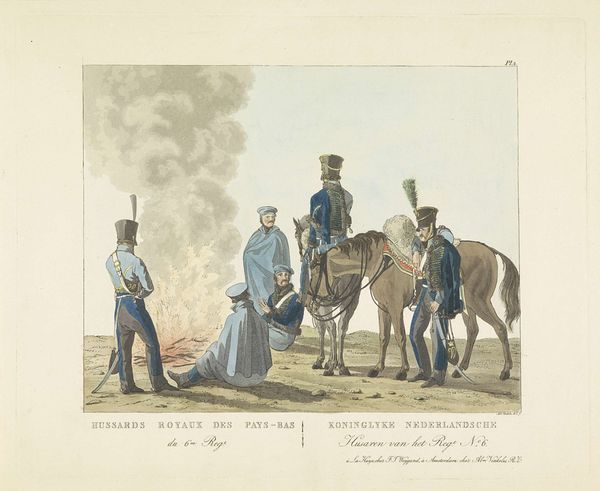
Vrijwillige Rustbewaarders te Paard van Utrecht, 1830 1830 - 1831
0:00
0:00
watercolor
#
portrait
#
landscape
#
caricature
#
figuration
#
watercolor
#
romanticism
#
costume
#
cityscape
#
watercolour illustration
#
genre-painting
#
academic-art
Dimensions: height 353 mm, width 455 mm
Copyright: Rijks Museum: Open Domain
Albertus Verhoesen created *Vrijwillige Rustbewaarders te Paard van Utrecht* in 1830 using lithography, a printmaking technique that democratized image production. The method involves drawing with a greasy crayon on a stone or metal plate, then using oil-based ink to transfer the image onto paper. The evenness of tone and crispness of line in this print owes much to the qualities of the lithographic stone itself, which when properly prepared, allowed for the reproduction of fine details. However, we can see how this kind of printmaking offered an image of civic life – in this case, volunteer guards – to a wide public. The proliferation of lithographs in the 19th century was an important aspect of mass culture, making images like this newly accessible. Considering this work's material and technique expands our understanding of its historical and cultural significance, beyond just its aesthetic qualities.
Comments
No comments
Be the first to comment and join the conversation on the ultimate creative platform.
